
Centro of Salamanca: The Heartbeat of History and Culture
Explore Centro in Salamanca: A captivating blend of history, culture, and vibrant city life, where architectural wonders and culinary delights await.
Centro in Salamanca is where history, culture, and vibrant city life converge in a harmonious blend. This enchanting neighbourhood is a treasure trove of architectural marvels, cobblestone streets, and rich historical narratives that date back to the Roman era. As you wander through its labyrinthine alleys, you'll encounter a remarkable fusion of Gothic, Renaissance, and Baroque styles, each telling a unique story of Salamanca's storied past. One of the standout features of Centro is the Plaza Mayor, often considered one of the most beautiful squares in Spain. This grandiose plaza is the heart of social life in Salamanca, where locals and tourists alike gather to enjoy the lively atmosphere, indulge in tapas, and soak in the stunning surroundings. The square's intricate facades and arcades are a testament to the city's architectural prowess and are particularly mesmerizing when illuminated at night. Centro is also home to the University of Salamanca, one of the oldest universities in Europe, founded in 1218. The university's historic buildings, including the famous facade adorned with plateresque carvings, are a must-visit for history buffs and architecture enthusiasts. Don't forget to look for the hidden frog on the university facade – a local legend promises good luck to those who find it! For those seeking cultural enrichment, the neighbourhood offers a plethora of museums, galleries, and theatres. The Casa de las Conchas, with its distinctive shell-covered exterior, houses a public library and offers a glimpse into the region's artistic heritage. The Art Nouveau and Art Deco Museum provides an intriguing contrast to the predominantly historical architecture, showcasing exquisite collections from the early 20th century. Centro's culinary scene is equally compelling, with numerous restaurants, cafes, and bars offering traditional Castilian dishes and local wines. Whether you're savoring a plate of jamón ibérico or enjoying a glass of Ribera del Duero, the gastronomic delights here are sure to leave a lasting impression.
Local tips in Centro
- Visit Plaza Mayor at night to see it beautifully illuminated.
- Look for the hidden frog on the University of Salamanca facade for good luck.
- Try traditional Castilian dishes at local restaurants for an authentic culinary experience.
- Wear comfortable shoes for exploring the cobblestone streets.
- Check out the Art Nouveau and Art Deco Museum for a unique contrast to historical architecture.
Centro of Salamanca: The Heartbeat of History and Culture
Centro in Salamanca is where history, culture, and vibrant city life converge in a harmonious blend. This enchanting neighbourhood is a treasure trove of architectural marvels, cobblestone streets, and rich historical narratives that date back to the Roman era. As you wander through its labyrinthine alleys, you'll encounter a remarkable fusion of Gothic, Renaissance, and Baroque styles, each telling a unique story of Salamanca's storied past. One of the standout features of Centro is the Plaza Mayor, often considered one of the most beautiful squares in Spain. This grandiose plaza is the heart of social life in Salamanca, where locals and tourists alike gather to enjoy the lively atmosphere, indulge in tapas, and soak in the stunning surroundings. The square's intricate facades and arcades are a testament to the city's architectural prowess and are particularly mesmerizing when illuminated at night. Centro is also home to the University of Salamanca, one of the oldest universities in Europe, founded in 1218. The university's historic buildings, including the famous facade adorned with plateresque carvings, are a must-visit for history buffs and architecture enthusiasts. Don't forget to look for the hidden frog on the university facade – a local legend promises good luck to those who find it! For those seeking cultural enrichment, the neighbourhood offers a plethora of museums, galleries, and theatres. The Casa de las Conchas, with its distinctive shell-covered exterior, houses a public library and offers a glimpse into the region's artistic heritage. The Art Nouveau and Art Deco Museum provides an intriguing contrast to the predominantly historical architecture, showcasing exquisite collections from the early 20th century. Centro's culinary scene is equally compelling, with numerous restaurants, cafes, and bars offering traditional Castilian dishes and local wines. Whether you're savoring a plate of jamón ibérico or enjoying a glass of Ribera del Duero, the gastronomic delights here are sure to leave a lasting impression.
Iconic landmarks you can’t miss
Plaza Mayor de Salamanca
Discover the beauty and vibrant culture of Plaza Mayor de Salamanca, a stunning Baroque square and cultural hub in the heart of Spain.

Casa de las Conchas
Explore the Casa de las Conchas, a stunning historical landmark in Salamanca, featuring a unique shell-adorned façade and rich cultural heritage.

Monterrey's palace
Explore Monterrey's Palace, a stunning historical landmark in Salamanca, showcasing Renaissance architecture and rich cultural history.

Palacio de la Salina
Explore the stunning Palacio de la Salina, an architectural masterpiece that embodies the rich history and culture of Salamanca, Spain.

Torre del Clavero
Explore the historical charm of Torre del Clavero in Salamanca, a stunning tower that embodies the city's rich heritage and architectural beauty.

Casco Histórico de Salamanca
Explore the enchanting streets of Casco Histórico de Salamanca, a UNESCO World Heritage site brimming with history, stunning architecture, and vibrant culture.

Palacio de Orellana
Explore the majestic Palacio de Orellana, a heritage museum in Salamanca showcasing the city's rich history through stunning architecture and captivating exhibits.
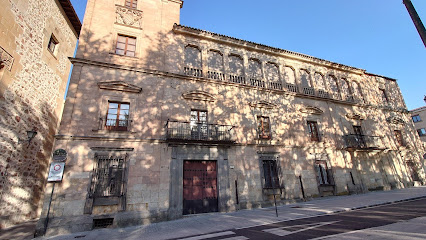
Monument to Miguel de Unamuno
Explore the Monument to Miguel de Unamuno in Salamanca, a serene tribute to a literary giant amidst the city's rich cultural heritage.

Palacio de los Fermoselle
Discover the architectural beauty and historical significance of Palacio de los Fermoselle, a must-visit tourist attraction in Salamanca, Spain.

Esculturas y monumentos de Salamanca
Discover the artistic treasures of Salamanca's sculptures and monuments, where history and culture intertwine in a stunning visual narrative.

Unmissable attractions to see
Plaza Mayor de Salamanca
Explore the breathtaking Plaza Mayor de Salamanca, a vibrant hub of history, culture, and stunning Baroque architecture in the heart of Spain.

Episcopal Palace (History Museum Salamanca)
Discover the grandeur of the Episcopal Palace in Salamanca, a historical museum showcasing the region's rich ecclesiastical heritage and architectural beauty.

Essential places to dine
RESTAURANTE LA HOJA 21
Experience authentic Mediterranean cuisine at Restaurante La Hoja 21 in Salamanca - where flavor meets tradition.

Restaurante El Mesón de Gonzalo
Experience authentic Mediterranean and Spanish flavors at El Mesón de Gonzalo in Salamanca – a culinary gem for every food lover.

Restaurante Tapería Lío Salamanca
Experience the vibrant flavors of Mediterranean cuisine at Restaurante Tapería Lío in Salamanca - a culinary delight not to be missed!

El Bardo Centro
Experience authentic Spanish cuisine at El Bardo Centro in Salamanca - where tradition meets taste in every delightful dish.

VIDA & COMIDA
Experience authentic Spanish cuisine at VIDA & COMIDA in Salamanca - where tradition meets taste in every dish.

Oroviejo
Discover Oroviejo in Salamanca: A delightful blend of traditional Castilian cuisine and modern European flair awaits every discerning palate.
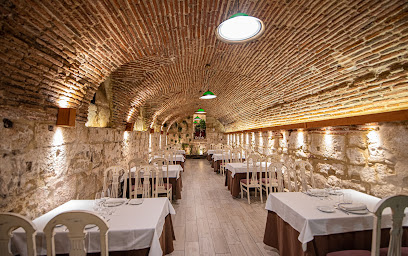
Zazu Bistro
Discover the exquisite flavors of France and the Mediterranean at Zazu Bistro in Salamanca – where every meal is a celebration.

Restaurante En la Parra, SALAMANCA
Experience the essence of fine dining at Restaurante En la Parra with exquisite Mediterranean flavors in Salamanca's charming atmosphere.

La Casa De Las Pulgas
Discover La Casa De Las Pulgas: A Culinary Gem in Salamanca Offering Traditional Spanish Dishes and Lively Tapas Culture.
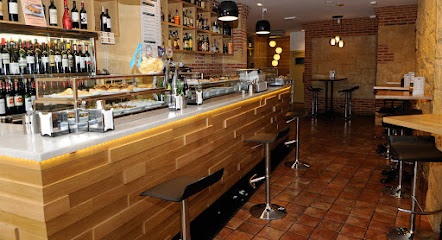
El Pecado Restaurante
Experience the best of Spanish cuisine at El Pecado Restaurante in Salamanca - where tradition meets innovation.

Markets, malls and hidden boutiques
Centro Comercial Vialia Salamanca
Experience shopping, dining, and entertainment at Centro Comercial Vialia Salamanca, a vibrant destination for tourists in the heart of Salamanca.

Sfera
Explore Sfera in Salamanca for trendy clothing and affordable fashion essentials that cater to every style and occasion.
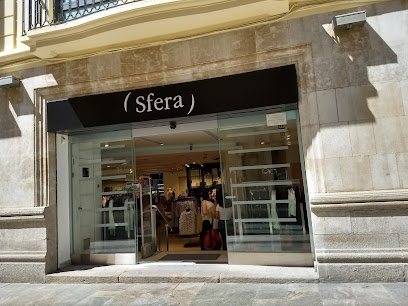
ALE-HOP
Discover unique gifts and local charm at ALE-HOP, a vibrant gift shop in the heart of Salamanca, Spain.

Latveria
Discover Latveria, a cultural gem in Salamanca, offering books, comics, crafts, and a cozy café for a unique shopping experience.

AMARGA VINTAGE
Discover one-of-a-kind vintage treasures at Amarga Vintage in Salamanca, where retro fashion meets sustainable style.

Señorita Naif
Discover unique gifts and stylish women's clothing at Señorita Naif, a charming gift shop in the heart of Salamanca, Spain.
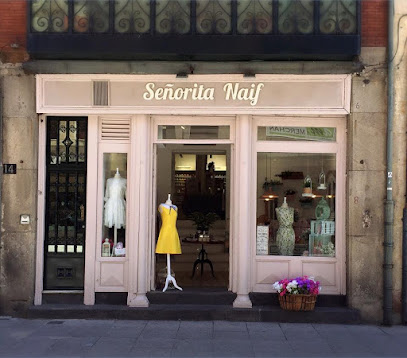
Boutique Libra
Discover unique fashion at Boutique Libra, a charming dress store in Salamanca where style meets personalized service in an inviting ambiance.

Natura
Discover unique gifts and stylish accessories at Natura, a charming gift shop in the heart of Salamanca, perfect for every traveler.

Arya Tara Salamanca
Explore Arya Tara Salamanca, where tradition meets modern fashion in the heart of Spain's historic Salamanca.

Akelarre
Discover unique gifts and local handicrafts at Akelarre, a charming gift shop in the heart of Salamanca, Spain.
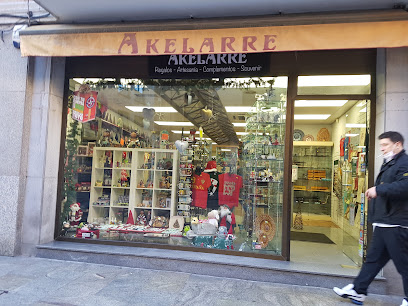
Regalos Artesanales de... Salamanca
Explore Regalos Artesanales de Salamanca for authentic gifts and handcrafted souvenirs that capture the essence of the city.

Txauen Salamanca
Discover the essence of contemporary fashion at Txauen Salamanca, where local design meets unique style in every garment.

Regalos El Corrillo
Explore Regalos El Corrillo in Salamanca for unique souvenirs and local jewelry, capturing the essence of Spain's rich cultural heritage.

El Desván
Discover unique souvenirs and local craftsmanship at El Desván, a charming gift shop in the heart of Salamanca.
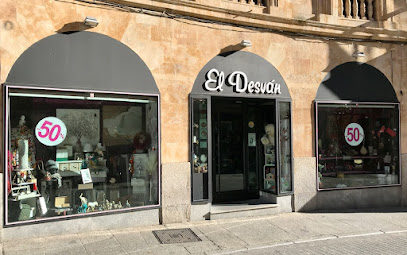
Essential bars & hidden hideouts
The Holy Cross
Discover the unique charm of The Holy Cross, an Irish pub in Salamanca blending traditional hospitality with local flavors.

St. Patrick's Irish Pub
Discover the vibrant atmosphere of St. Patrick's Irish Pub, where Irish and German flavors meet in Salamanca's lively heart.

O'HARA'S IRISH PUB
Discover the lively ambiance and authentic Irish flavors at O'Hara's Irish Pub in Salamanca, the perfect spot for relaxation and revelry.

Niebla Cocktail Bar
Discover the vibrant nightlife of Salamanca at Niebla Cocktail Bar, where exquisite cocktails meet live jazz in an enchanting atmosphere.

The doctor coctail
Experience the vibrant nightlife at The Doctor Cocktail in Salamanca, where expertly crafted cocktails and a warm atmosphere await.

Pub La Perla Negra Irish Club - Salamanca
Discover Irish Hospitality in Salamanca at Pub La Perla Negra – A Vibrant Pub Experience with Live Music and Fun!

Gatsby - Salamanca
Discover the vibrant nightlife at Gatsby - Salamanca, a lively pub with affordable drinks and a friendly atmosphere in the heart of historic Salamanca.
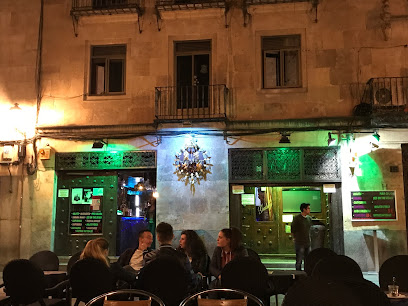
Vintage Cocktail Bar
Experience the charm of Salamanca at the Vintage Cocktail Bar, where exceptional cocktails and a cozy atmosphere await you.

El Otro Lado
Experience the vibrant nightlife at El Otro Lado, Salamanca's top bar featuring live piano music, a diverse drink menu, and an unforgettable atmosphere.

Cocteleria en Salamanca La Regenta Gin Club - Salamanca
Discover La Regenta Gin Club, Salamanca's premier cocktail bar known for its exquisite gin selection and vibrant nightlife.

Local Phrases
-
- HelloHola
[oh-lah] - GoodbyeAdiós
[ah-dyohs] - YesSí
[see] - NoNo
[noh] - Please/You're welcomePor favor/De nada
[por fah-vor/deh nah-dah] - Thank youGracias
[grah-thyahs] - Excuse me/SorryPerdón/Lo siento
[pehr-dohn/loh syen-toh] - How are you?¿Cómo estás?
[koh-moh ehs-tahs] - Fine. And you?Bien. ¿Y tú?
[byen. ee too] - Do you speak English?¿Hablas inglés?
[ah-blahs een-glehs] - I don't understandNo entiendo
[noh ehn-tyen-doh]
- HelloHola
-
- I'd like to see the menu, pleaseMe gustaría ver la carta, por favor
[meh goos-tah-ree-ah behr lah kahr-tah, por fah-vor] - I don't eat meatNo como carne
[noh koh-moh kahr-neh] - Cheers!¡Salud!
[sah-lood] - I would like to pay, pleaseMe gustaría pagar, por favor
[meh goos-tah-ree-ah pah-gahr, por fah-vor]
- I'd like to see the menu, pleaseMe gustaría ver la carta, por favor
-
- Help!¡Ayuda!
[ah-yoo-dah] - Go away!¡Fuera!
[foo-eh-rah] - Call the Police!¡Llama a la policía!
[yah-mah ah lah poh-lee-thee-ah] - Call a doctor!¡Llama a un médico!
[yah-mah ah oon meh-dee-koh] - I'm lostEstoy perdido
[ehs-toy pehr-dee-doh] - I'm illEstoy enfermo
[ehs-toy ehn-fehr-moh]
- Help!¡Ayuda!
-
- I'd like to buy...Me gustaría comprar...
[meh goos-tah-ree-ah kohm-prahr...] - I'm just lookingSolo estoy mirando
[soh-loh ehs-toy mee-rahn-doh] - How much is it?¿Cuánto cuesta?
[kwan-toh kwehs-tah] - That's too expensiveEs demasiado caro
[ehs deh-mah-syah-doh kah-roh] - Can you lower the price?¿Puedes bajar el precio?
[pweh-dehs bah-hahr ehl pree-thyoh]
- I'd like to buy...Me gustaría comprar...
-
- What time is it?¿Qué hora es?
[keh oh-rah ehs] - It's one o'clockEs la una
[ehs lah oo-nah] - Half past (10)Las diez y media
[lahs dyehs ee meh-dee-ah] - MorningMañana
[mah-nyah-nah] - AfternoonTarde
[tahr-deh] - EveningNoche
[noh-cheh] - YesterdayAyer
[ah-yehr] - TodayHoy
[oy] - TomorrowMañana
[mah-nyah-nah] - 1Uno
[oo-noh] - 2Dos
[dohs] - 3Tres
[trehs] - 4Cuatro
[kwah-troh] - 5Cinco
[theen-koh] - 6Seis
[says] - 7Siete
[syeh-teh] - 8Ocho
[oh-choh] - 9Nueve
[nweh-veh] - 10Diez
[dyehs]
- What time is it?¿Qué hora es?
-
- Where's a/the...?¿Dónde está...?
[dohn-deh ehs-tah] - What's the address?¿Cuál es la dirección?
[kwahl ehs lah dee-rehk-syohn] - Can you show me (on the map)?¿Puedes mostrarme (en el mapa)?
[pweh-dehs mohs-trar-meh (ehn ehl mah-pah)] - When's the next (bus)?¿Cuándo es el próximo (autobús)?
[kwan-doh ehs ehl proh-ksee-moh (ow-toh-boos)] - A ticket (to ....)Un billete (a ....)
[oon bee-yeh-teh (ah ....)]
- Where's a/the...?¿Dónde está...?
History of Centro
-
Centro, the heart of Salamanca, stands on an area that was once a bustling Roman settlement known as Helmantika. Established in the 2nd century BC, the Roman influence is evident in the remnants of ancient walls and structures that still dot the landscape. The city was an important military and administrative hub in the Roman Empire, contributing significantly to the cultural and economic development of the region.
-
In the late 12th century, the University of Salamanca was founded, further solidifying the Centro's importance in education and culture. As one of the oldest universities in the world, it attracted scholars and students from across Europe, leading to a thriving intellectual community. The university's influence is palpable in Centro, with historic buildings like the Casa de las Conchas and the Plateresque façade of the university itself, which reflect the architectural grandeur of the period.
-
The 16th and 17th centuries marked Salamanca's Golden Age, during which Centro became a center for arts, literature, and philosophy. This period saw the construction of magnificent Baroque buildings, such as the New Cathedral and various convents. Writers and thinkers like Francisco de Vitoria and Miguel de Unamuno emerged from this vibrant cultural milieu, contributing to Spain's literary and philosophical legacy.
-
During the Spanish Civil War (1936-1939), Salamanca was a stronghold for Franco's Nationalists. Centro witnessed significant political activity and propaganda, which changed the social fabric of the area. Post-war, the city faced reconstruction challenges, but Centro remained a focal point for cultural revival, with efforts to restore damaged historic sites and maintain its rich heritage.
-
In recent decades, Centro has transformed into a vibrant tourist destination, balancing historical preservation with modern amenities. The influx of visitors has revitalized local businesses and cultural activities, making the area a lively hub of gastronomy, art, and tradition. Events such as the Semana Santa and the Feria de Salamanca showcase the neighborhood's ongoing cultural significance, reflecting the enduring spirit of Salamanca and its people.
Centro Essentials
-
Centro is centrally located in Salamanca and easily accessible from other neighborhoods. The main bus station, Estación de Autobuses de Salamanca, is a short 15-minute walk from Centro. From the train station, Renfe, you can take a taxi or a local bus (Line 1) that directly connects to Centro. If you’re coming from the airport, the most convenient option is to take a taxi, which takes about 20 minutes.
-
Centro is pedestrian-friendly, with most attractions within walking distance. Public transport options include buses (with several lines serving the area) and taxis, which are readily available. For a more local experience, consider renting a bicycle or using bike-sharing services available throughout the city. You can also explore Centro on foot to fully appreciate its historical architecture and vibrant street life.
-
Centro is generally safe for tourists, but typical precautions should be observed. Avoid isolated areas at night, particularly around the outskirts of the neighborhood. Petty crimes, such as pickpocketing, can occur in crowded places like Plaza Mayor and near popular tourist sites, so keep your belongings secure and be vigilant.
-
In case of an emergency, dial 112 for immediate assistance. For police assistance, you can reach the local police station located in Centro. The nearest hospital, Hospital Universitario de Salamanca, is equipped for medical emergencies. Always carry a copy of your ID and any necessary health insurance information.
-
Fashion: Do dress smartly, especially when dining out or visiting religious sites. Don't wear overly casual or beach attire in restaurants or churches. Religion: Do respect religious customs; cover your shoulders and knees when entering churches. Public Transport: Do be polite and offer your seat to the elderly. Don't talk loudly or eat on public transport. Greetings: Do greet with a handshake and a smile. Don't use overly informal language until you know someone better. Eating & Drinking: Do try local tapas and wines. Don't ask for alterations to traditional dishes, as this can be seen as disrespectful.
-
To experience Centro like a local, visit the bustling Mercado Central de Salamanca, where you can find fresh produce and local delicacies. Try to interact with shopkeepers and locals; they are often happy to share stories and recommendations. Attend a traditional flamenco show or a local festival if your visit coincides with one. Finally, take the time to explore the lesser-known streets and hidden plazas to discover unique cafés and shops away from the tourist crowds.
Nearby Cities to Centro
-
Things To Do in Avila
-
Things To Do in Valladolid
-
Things To Do in Segovia
-
Things To Do in Bragança
-
Things To Do in Chaves
-
Things To Do in Madrid
-
Things To Do in Vila Real
-
Things To Do in Lamego
-
Things To Do in Toledo
-
Things To Do in Burgos
-
Things To Do in Guimarães
-
Things To Do in Braga
-
Things To Do in Coimbra
-
Things To Do in Porto
-
Things To Do in Aveiro













